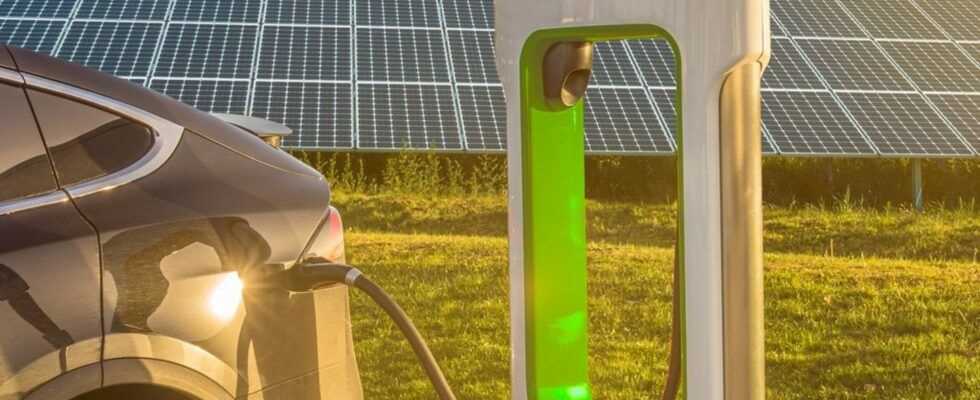Green mobility
Where German cities are in the process of transformation
There are now more than 35,000 charging stations connected to the network in Germany.
© TimSiegert-batcam / Shutterstock.com
In order to counter climate change, global CO2 emissions must decrease significantly. Mobility is a key element in this.
The expansion of green mobility in German cities is progressing. The state goals foresee an even faster pace, but there is already a lot of movement in the electrification and decarbonization of cities. This is how the municipalities in Germany are making progress with the transformation.
Charging stations
The current federal government has in their “Master plan charging infrastructure” the goal is formulated to install one million public charging stations and an additional 100,000 fast charging points by 2030. To achieve this goal, more than 2,000 charging stations would have to be set up per week by 2030, currently there are around 200. According to the Federal Network Agency there are currently 36,894 normal and 6,099 fast charging points in operation.
The front runner is Bavaria with 7,707 normal and 1,042 fast charging points, followed by North Rhine-Westphalia with 6,784 normal and 780 fast charging points and Baden-Württemberg with 5,581 normal and 1,117 fast charging points, respectively. In the districts, Munich (1,356 columns), Berlin (1,220) and Hamburg (1,203) are clearly ahead of the rest of the nation in terms of normal charging points: Wolfsburg (740), Hanover (532), Essen (404), Aachen (362) follow. and Stuttgart (335). With the exception of Berlin (155) and Hamburg (163), no district can look back on a three-digit result for fast charging points.
Transportation
The potential for savings in local public transport is particularly great, as the European Union (EU) has recognized. That is why the federal government is currently implementing a requirement from Brussels: The Clean Vehicle Directive (CVD) stipulates that binding emission standards must be observed in municipal fleets. The requirements are to apply from August 2, 2021 and relate in particular to public transport buses.
However, anyone who fears that electrical technology cannot yet replace diesel and gasoline buses can rest assured. The vehicle manufacturer MAN recently successfully passed a test under real conditions. An electric bus from the manufacturer drove through Munich for a whole day and served two bus routes operated by the Munich Transport Company (MVG). The result: the bus covered around 550 kilometers within 24 hours and did not have to be charged once.
Shared mobility
The relatively new concept of car sharing is also making headway. A fundamental distinction must be made between so-called free-floating and stationary systems. With the latter, the vehicles have to be picked up and returned at certain points, while free-floating makes it possible to end the loan on the spot and free the car for the next one.
At the beginning of 2021 there was according to the Federal CarSharing Association (bcs) 228 car sharing companies, cooperatives and associations in Germany that provide various car sharing offers at 855 locations across Germany. The bcs also has around 2.9 million registered users, which is an increase of 25.5 percent compared to the previous year. There are car sharing offers in 78 of the 81 large cities in Germany (more than 100,000 inhabitants). While the share of e-cars was just 1.2 percent of all cars registered in Germany at the end of 2020, the car-sharing providers already account for 18.5 percent of the entire fleet.
The situation is similar with bike sharing, but here the electrified share is manageable. The two largest providers are also the two oldest on the market: The service Call a Bike from Deutsche Bahn and the Leipzig company Nextbike have long shared the business. In the meantime, a number of companies have been added, for example Lime, which is co-financed by Uber, which also offers e-scooters. Municipalities often enter into cooperation with the companies: In Augsburg, for example, the fleet of bicycles made available by the municipal utilities consists of 150 nextbike bikes, which are spread over 30 stations in the city. However, none of them are electric, which also reflects the nationwide trend in the proportion of e-bikes in rental models.
However, e-scooters play a negligibly small role – despite the often numerous models and providers in larger cities. With electrified scooters, only a little bit left from the initial euphoria today. This is due to the manageable ecological balance – that also sees that Federal Environment Agency in an assessment So: “As a rental vehicle in city centers, where public transport networks are well developed and the short distances are easy to cover by foot and bike, the scooters tend to have disadvantages for the environment – and as additional users of the already inadequately developed infrastructure, walking and cycling are less attractive close.”
